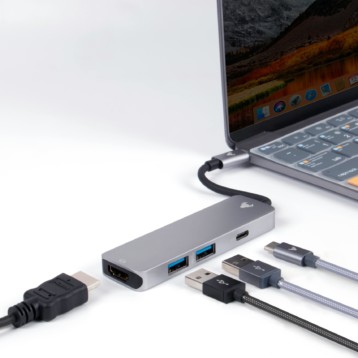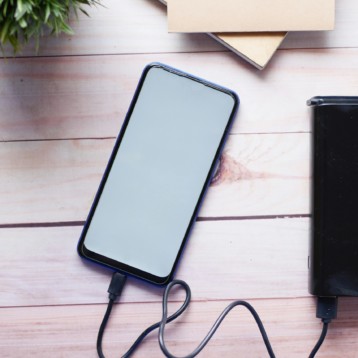When it comes to purchasing a TV, size matters more than you know. It depends on your preference, the visual quality, the size of the room that you are going to place the TV in, and its functionality also slightly differs based on size. It is easier to understand how big a 50-inch TV is by understanding what its purpose is.
If you have a small entertainment area at your house with about a viewing distance of 6 feet, then the 50-inch TV is your perfect choice. Usually, people who prefer a cinematic experience at home purchase this. So, a 50-inch TV is quite big. However, there is a slight twist: go to the “Evolution of TV sizes” section to know better.
So, let us explore this in detail. How big is a 50-inch TV, its dimensions, evolution, and other factors?
Understanding TV Screen Size
Let us start at the beginning. This is often a misunderstood concept. People are unclear about what TV size means. Well, let me get this straight, when you refer to a “50-inch TV”, it simply means the diagonal screen size. That is the distance from one corner to the opposite corner of the screen.
Screen size has an impact on your viewing experience. You watch TV for entertainment, and entertainment is a form of escape from our day-to-day life. A larger size will give you a more in-depth experience, but this also varies depending on the size of the room and the distance between the viewer and the TV. So, finding the right balance is key.
Related – How Big Is A 32 Inch TV: Dimensions, Size, And Price
Evolution of TV Sizes
To understand how big a 50-inch TV is in 2023, exploring how it changed over the years helps. In the past, decades ago, traditional CRT (cathode ray tube) TVs were commonly used, and a 36-inch CRT TV was considered quite large. Well, in today’s world, even a 50-inch TV is often considered just “midsize.” Crazy how times change!
This is the result of technological advancements, and it is good because we are supposed to move forward and never backward. Today’s manufacturers can produce much larger screens more cost-effectively, and resolutions like 4K and 8K make big TVs more practical. Also, the ultra-slim designs reduce the space taken by larger screens. You just need length in the walls.
Dimensions of a 50-inch TV

Now that we got the basics out of the way, let’s see the specifics.
- Height: A typical 50-inch TV is about 26 inches in height.
- Width: The width is approximately 44 inches.
- Thickness: Most 50-inch TVs have a thickness of 2 to 3 inches.
Well, don’t go buying a TV without understanding the dimensions. The reason? Well, you might have already understood that the room where you decide to place the TV matters. If you are planning to mount the TV or place it in a specific spot within your living space, make sure it fits well, and you’ll be comfortable watching the TV.
Well, don’t just measure the screen; take the bezels into account because they vary based on models.
Screen Resolution and Pixel Density
This is an important factor to consider. Because the pixel density and image quality can be affected by it. In 2023, most 50-inch TVs are Ultra HD 4K resolution, with some offering an 8k resolution. The pixel density is what determines how sharp and clear the images appear.
Consider this,
- 4K and 8k resolution: These are ideal for larger screens, such as 50-inch TVs. They deliver nothing short of exceptional clarity and detail.
- Viewing Distance: to get the full effect of the resolution, you’ll either have to sit closer or opt for a large TV that matches.
Also Read – 55-inch TV Dimensions (Length and Height In Cm And Inches)
Aspect Ratios
TVs come in a variety of aspect ratios, such as 16:9, 21:9, and more. The aspect ratio affects the viewing experience and fit with different content.
- 16:9 → This is the standard aspect ratio for most TVs and content.
- 21:9 → Such a wider aspect ratio is great for cinematic experience but often useless without a larger screen to completely enjoy it.
These are the two common aspect ratios used in TVs. Computer screens and other platforms vary as per their uses.
The Impact of Bezel Size
The impact of Bezel Size is often overlooked. Bezels, in case you’re unfamiliar, is the frame around the screen. Slimmer bezels give the TV viewing experience less obstruction. This, in turn, gives a more immersive experience while watching TV. For a 50-inch TV with a slim Bezel, it can make it look even bigger than it is.
Mounting options
Here are your options to consider for mounting your 50-inch TV. You can choose to wall mount it or simply use a TV stand. This is completely your choice based on the layout of the room, the space available, and the aesthetics and decor of the room.
But what are the particular benefits of each?
- Wall Mounting: Saves space and provides a modern look since the TVs before were often put on a desk-like stand.
- TV Stand: This option offers flexibility and allows you to move the TV if needed. You will not have to worry about the marks and holes on the walls of mounting a TV.
The Optimal Viewing Experience
You might have already understood that the viewing experience is not only the result of the size of a TV. Factors like the size of a room, its dimensions, and seating arrangements. The viewing experience is a combination of all of the aforementioned, including the TV size.
Let’s see,
- Viewing Distance: Sitting too close to a large TV? Bad! It can be overwhelming and harmful to eye health. So, find the right balance. For a 50-inch TV, the ideal distance is often said to be approximately 75 inches, which is 6.25 feet from the TV.
- Viewing Angles: The Angles do matter; the wrong angle can cause a stressful viewing experience for the eyes as well. Ensure everyone in the room has a clear view of the screen. Well, a FOV (Field of View) of 30 – 36 degrees is the commonly advised angle for watching TV. This varies on your preferences, but if the TV is farther, the angle is smaller and vice versa.
Also Read – How Big Is A 40-Inch TV? (2023)
Frequently Asked Questions
- What is the actual diagonal measurement of a 50-inch TV?
The actual diagonal measurement is approximately 50 inches from corner to corner.
- How do I measure a TV’s screen size?
Measure the diagonal distance from one corner of the screen to the opposite corner.
- Is a 50-inch TV too big for a small living room?
It depends on the room’s dimensions and seating arrangements. You may need to consider a smaller TV if space is limited.
- What’s the ideal viewing distance for a 50-inch TV?
The ideal viewing distance is typically about 6.25 to 10.4 feet, depending on the TV’s resolution.
- Do screen resolution and technology affect TV size perception?
Yes, higher resolutions like 4K and 8K make larger screens more practical and enjoyable.
Final Thought
Hopefully, it is clear how big a 50-inch TV is in 2023. What was once considered a super large TV is only mid-size today. What was considered a large TV (36”) once is only considered a small size and is not produced anymore. Television has evolved largely throughout the decades. Today’s TVs give a more realistic and life-like experience. It is no more about watching a program; it is all about experiencing it.
The 50-inch TV is quite big, actually, but is considered mid-size. However, to get the full experience from the TV, go ahead and consider the factors mentioned in this article.
Have a comfy cinematic experience with your TV!










